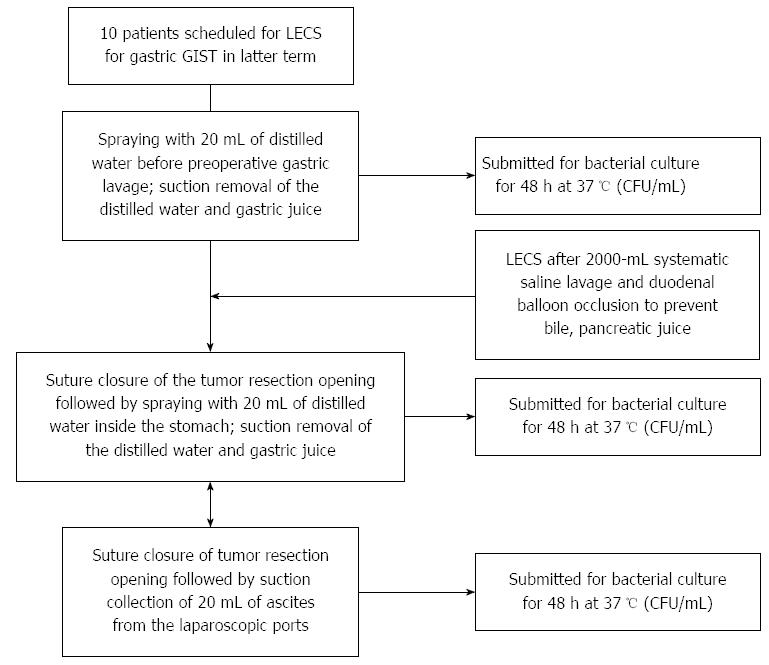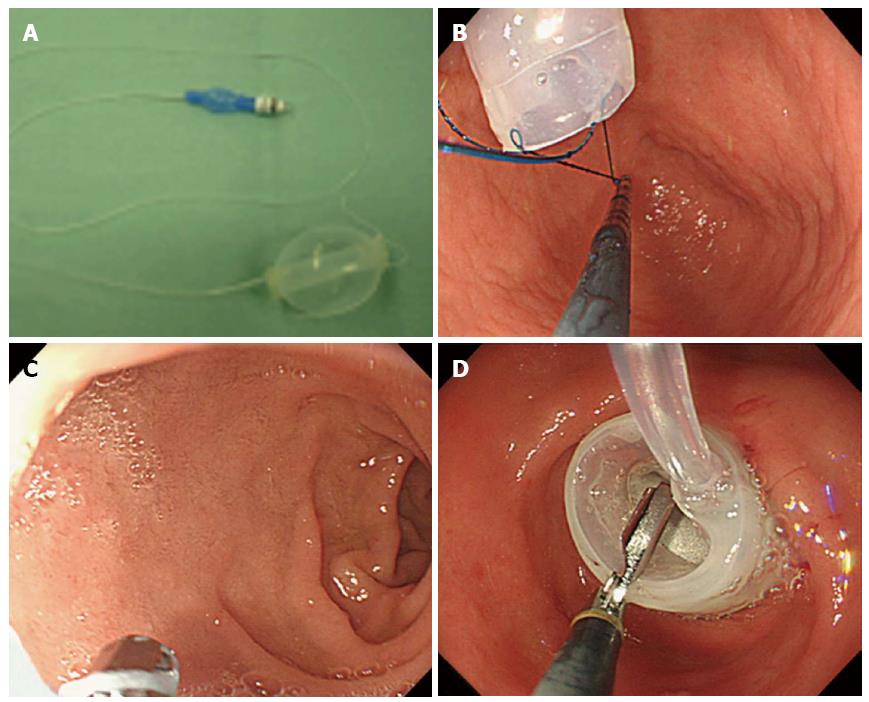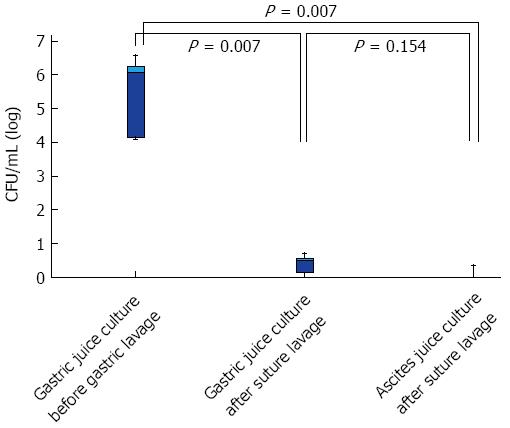Copyright
©2014 Baishideng Publishing Group Inc.
World J Gastroenterol. Nov 14, 2014; 20(42): 15763-15770
Published online Nov 14, 2014. doi: 10.3748/wjg.v20.i42.15763
Published online Nov 14, 2014. doi: 10.3748/wjg.v20.i42.15763
Figure 1 Flowchart of sampling measurement in the latter term.
The inside of the stomach was evenly sprayed with 20 mL of distilled water right before the LECS, and 20 mL of gastric juice was collected in a sterile tube and submitted for stomach bacterial culture before gastric lavage. The inside of the stomach was washed evenly with 2000 mL of saline. After suture closure of the tumor resection opening, without no more lavage, the gastric wall was sprayed with 20 mL of distilled water, and 20 mL of gastric juice was collected in a sterile tube and submitted for culture; 20 mL of ascites was collected from the laparoscopic ports and submitted for culture. LECS: Laparoscopic and endoscopic cooperative surgery; GIST: Gastrointestinal stromal tumors.
Figure 2 Duodenal balloon occlusion to prevent bile and pancreatic juice.
A: A nylon thread was made as loop at the tip of the balloon to facilitate firm grasping. B: The balloon was passed through to the bulbus duodeni. C: The balloon was inserted into the descending part of the duodenum and pulled up to the bulbus. D: The balloon was inflated and fixed in place by injecting it with 60-70 mL of air to prevent refluxed bile and pancreatic juice.
Figure 3 Bacterial load before and after systematic lavage of the stomach.
The bacterial counts in the gastric juice culture before gastric lavage and the ascites culture after suture closure were also significantly reduced (P = 0.007), but no significant difference was observed in the bacterial counts in the gastric juice culture and ascites culture after suture closure (P = 0.154).
- Citation: Mori H, Kobara H, Tsushimi T, Fujihara S, Nishiyama N, Matsunaga T, Ayaki M, Yachida T, Tani J, Miyoshi H, Morishita A, Masaki T. Reduction effect of bacterial counts by preoperative saline lavage of the stomach in performing laparoscopic and endoscopic cooperative surgery. World J Gastroenterol 2014; 20(42): 15763-15770
- URL: https://www.wjgnet.com/1007-9327/full/v20/i42/15763.htm
- DOI: https://dx.doi.org/10.3748/wjg.v20.i42.15763











